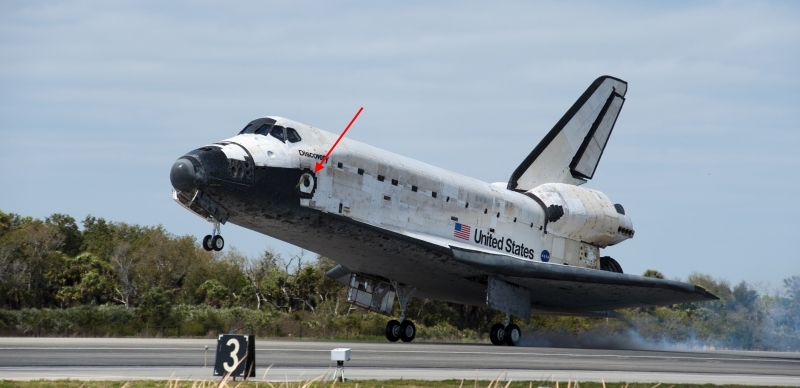On the rope for a rocket or a mad rescue system

Before the Challenger crash, there was no escape system on the Space Shuttle. After the separation of the side solid-fuel accelerators, emergency modes were provided with the return to the launch site, landing on another continent or after one orbit. But if the accident occurred before the separation of accelerators, or the shuttle lost controllability before landing, then the crew had only a few pages of “non-standard emergency instructions”, so that there was something to read before dying. After the Challenger crash, when the astronauts survived the destruction of the orbiter and died when they hit the water, the engineers thought about the rescue system for the shuttle, and the original version was very unusual.
There was no money to rework the shuttle cabin into a full-fledged rescue vehicle, so the engineers had to invent something simpler. The Space Shuttle had a hatch through which the astronauts entered before the flight and exited after landing.

')
Theoretically, one could give the crew parachutes and offer to jump over this hatch. Tested on mock-ups in a wind tunnel. The results were not very good - the astronaut figures would slide along the wing, which would mean a blow and, at a minimum, injuries for real people. The task arose of finding some way to divert astronauts away from the wing. And the first option was obvious for engineers who are developing space technology - using rockets. According to the original plan, the astronaut had to run up to the hatch, cling to the rocket and press a button. Conducted tests on mannequins. The test video should have been saved, but I could not find it. I was lucky on the channel of astronaut Mike Mullein, who left the squadron in the 90s and is now working as a speaker-motivator and agitator for industrial safety, I found a piece of this video (from 7:07)
The rocket twists to stabilize, but even in the puffs of its smoke one can see how the mannequin "sausages". There is nothing surprising that the video was watched by astronauts, they were surprised and said that they did not want to perform such tricks (and they would have to fly for a rocket even without any accidents when preparing for flights). According to another version, “what are you going to do with people ?!” the doctor cried. In any case, this scheme was abandoned, and the astronauts during an emergency escape of the shuttle led away a special retractable pole from the wing.
However, the system worked more in complacency mode, because it could have been saved with the help of an accident only if the controlled flight was maintained at subsonic speed and low altitude. Accident before the separation of side accelerators or loss of control shortly before landing remained options without a chance to survive. For comparison, in Vostok, Soyuz, Merkuriev, Gemini and Apollo, rescue systems could actually save life throughout the entire range from launch to orbit, and the landing systems had additional emergency systems that rescued the crew in case of failure of the main.
Source: https://habr.com/ru/post/399191/
All Articles